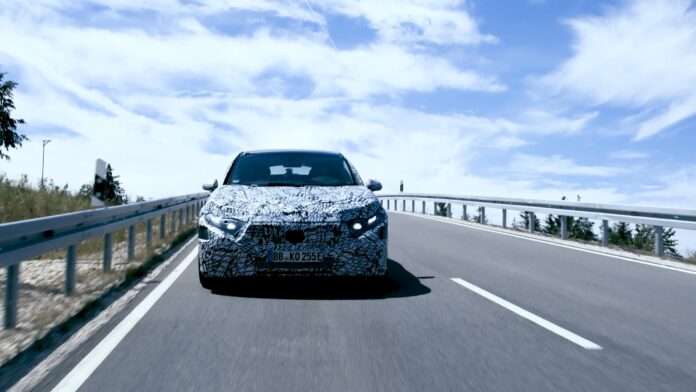Mercedes EQS is the stand-alone, all electric member of the new S-Class range and will launch in U.S. this fall. The vehicles are produced on a CO2-neutral basis, while resource-saving materials such as floor mats made from recycled yarn are used. EQS components have a total weight of more than 80 kg made of resource-saving materials such as: cable ducts are made of recycled plastics, floor coverings are made of ECONYL recycled yarn, and the aluminum for the inner part of the front bonnet has been certified by the Aluminum Stewardship Initiative (ASI) as sustainably produced.
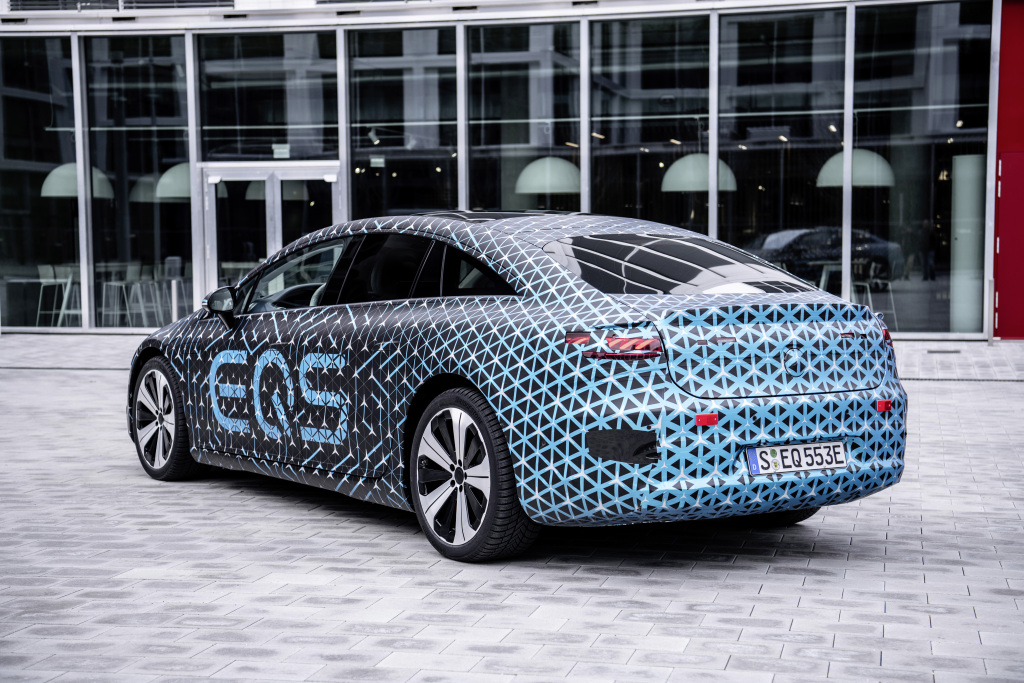
Mercedes-Benz is also the first automaker to receive OFI certification for the cabin air filter in the EQS. And the absorption area of the Hepa filter, which is also used, even corresponds to the size of 150 soccer fields.
The EQS is the first production car with a cd value from 0.20. Aerodynamic fine tuning such as wheel spoiler front and rear in arrow-shaped, coordinated underbody panels, and rear spoiler optimized for lift and air drag. To reduce wind noise, a numerous optimizations in the area of the door structure and door and side window seals with, for the first time, size side windows in a Mercedes. Other development steps to reduce wind noise including retractable door handles and A-pillar with specially shaped trim strip, and a special acoustic comfort package with laminated glass panes.
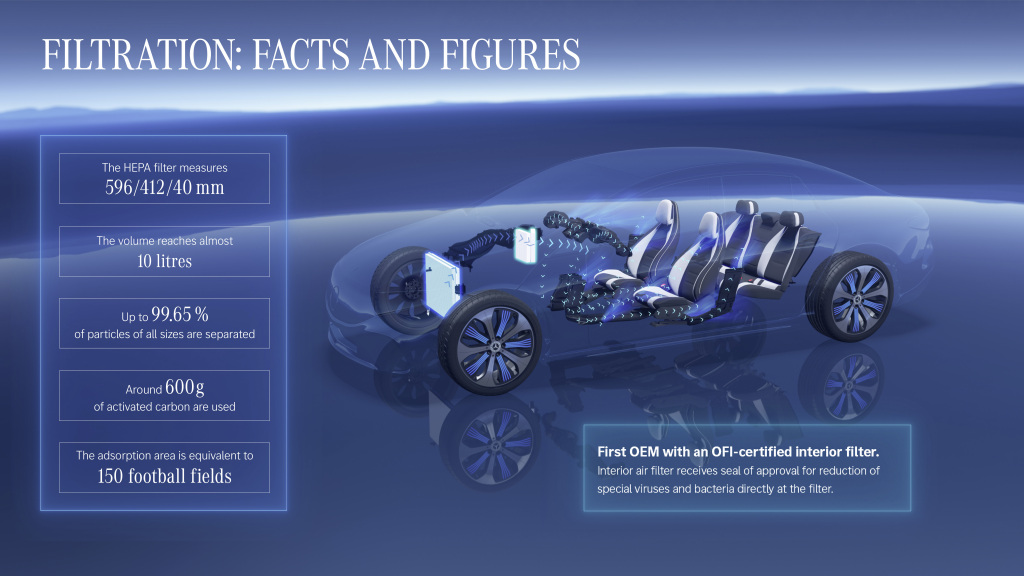
For Mercedes EQS, a new charging method is offered by Mercedes me Charge. The Plug & Charge allows convenient charging of the EQS. Drivers drive to the charging station, open the flap, insider the connector and the power starts to flow. Charging starts automatically when the charging cable is plugged in. Communication between vehicle and charging station takes place directly via the charging cable. With Mercedes me Charge, the charged energy quantities are balanced out with green electricity after the actual charging process. In addition, in the first three years after the purchase of an EQS, there is no basic charge to customers for Mercedes me Charge. Green charging and driving can be experienced via MBUX and the Mercedes me App. Currently there are over 500,000 AC and DC charging points in 31 countries, including over 200,000 in Europe.
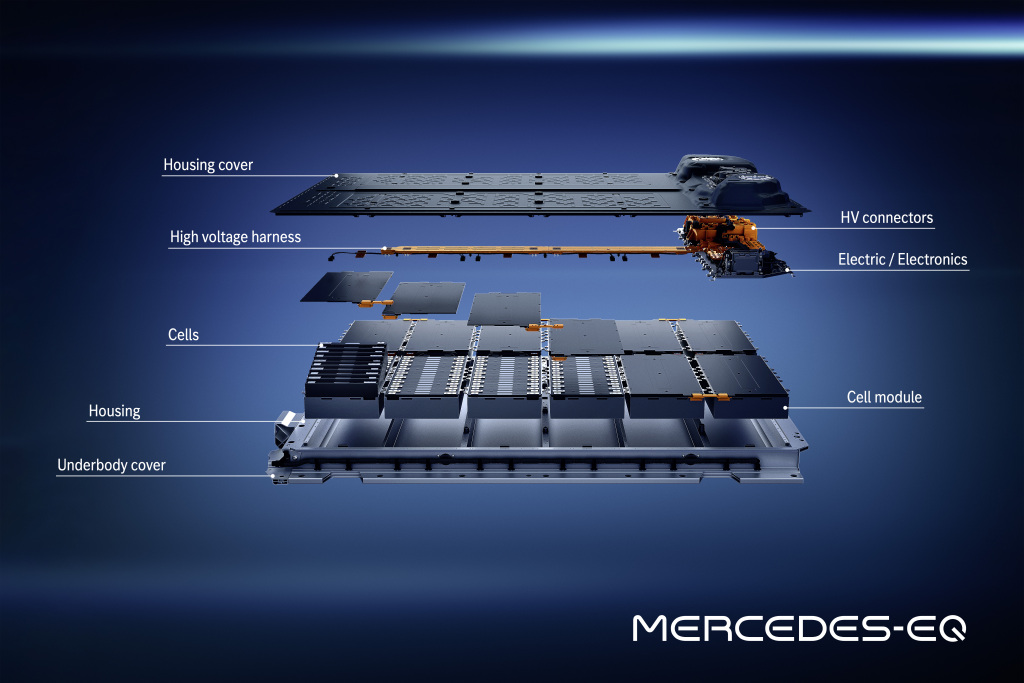
The EQS can be charged with up to 200 kW at fast charging stations with direct current. At home or at public charging stations, the EQS can charged with up to 22 kW with AC using the onboard charger. The EQS will also allow bidirectional charging in Japan, i.e. charging in both directions. In addition, there are various intelligent charging programs that can be activated automatically depending on the location, and functions such as particularly battery-saving charging. The high charging currents can be maintained for a long time through temperature and charging management.
EQS also marks the launch of a new generation of batteries with significantly higher energy density. The larger of the two batteries has a usable energy content of 107.8 kWh. That is around 26 percent more than the EQC. A major advance in sustainability has been achieved in the cell chemistry: the proportion of cobalt has been reduced to ten percent, and the optimized active material consists of nickel, cobalt and manganese in a ratio of 8:1:1. The battery has shorter charging times through intelligent thermal management when navigation is activated with Electric Intelligence. Battery can also be preheated or cooled while driving.
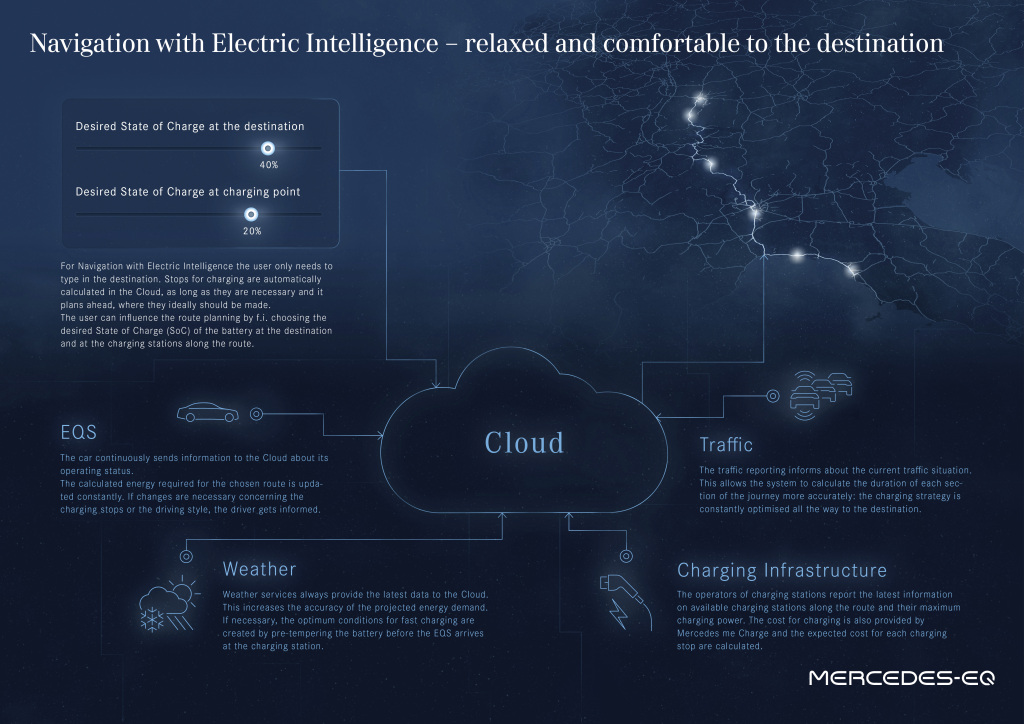
With an operating range of up to 770 kilometers (WLTP) and an output of up to 385 kW, the powertrain of the EQS also meets expectation of a progressive saloon in the S-Class segment. All EQS models have an electric powertrain (eATS) at the rear axle, while the versions with 4MATIC also have an eATS at the front axle. Here are some modular drive concept:
- The electrical consumption of the EQS 450+, NEDC: combined electrical consumption:
19.1-16.0 kWh/100 km; combined CO2 emissions: 0 g/km - The electrical consumptio1 of the EQS 580 4MATIC+, NEDC: combined electrical consumption: 20.0-16.9 kWh/100 km; combined CO2 emissions: 0 g/km
- Max. torque transmission output: 568 Nm (EQS 450+) resp. 855 Nm (EQS 580 4MATIC)
- WLTP ranges of up to 770 kilometers are possible depending on vehicle equipment and configuration
- Top speed limited to 210 km/h
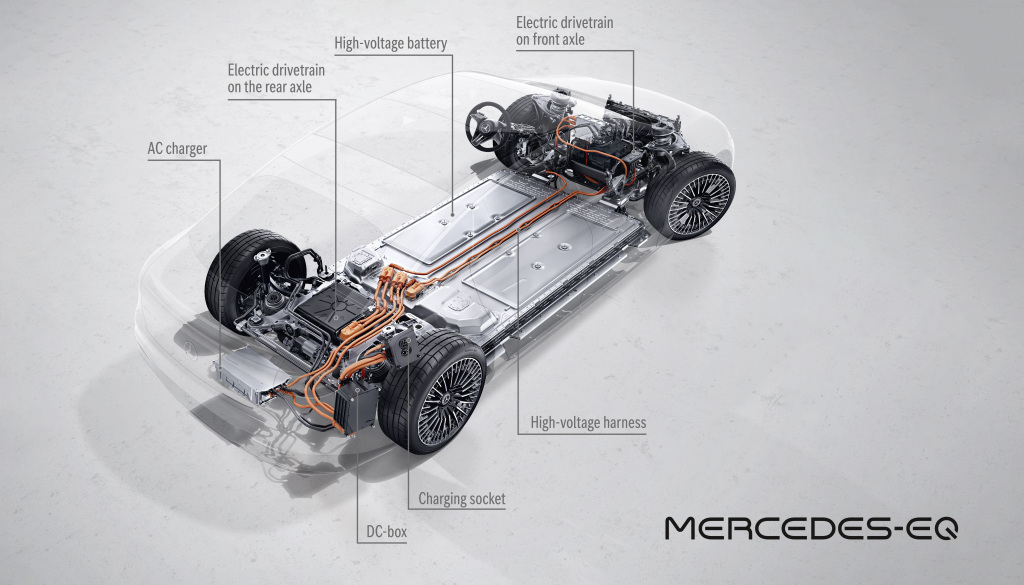
EQS is available with rear- and all-wheel drive. The vehicle’s electric motors on the front and rear axles are modern permanently excited synchronous motors. On the rear axle due to six-phase operation, there are two windings with three phases each. EQS’s thermal concept for high load capacity and multiple accelerations like a water lance in the shaft of the rotor cools the rotor, needle-shaped pin-fin structure on the inverter, and transmission oil cooler: also more efficient during cold driving (gear oil is warmed up).
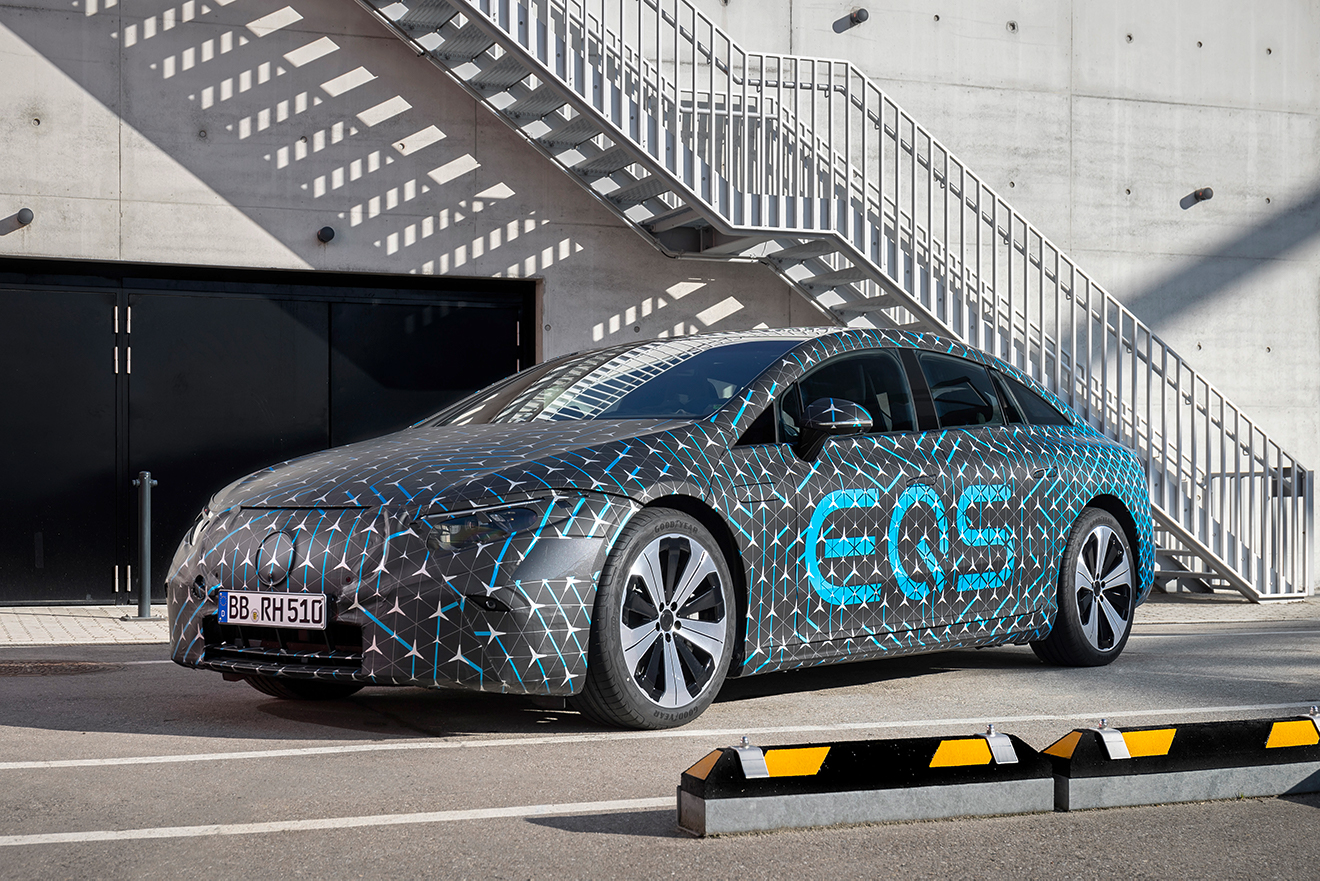
For noise and vibration comfort, there is a NVH-optimized arrangement of the magnets inside the rotors (known as sheet metal cut) while reduces the use of rare earths at the same time. The vehicle has a special winding, known as stator tilt from EQS. The cover of the inverter is a sandwich construction made of three metal and plastic layers and eATS have a special foam mat all around as an NVH cover. The main floor under the battery is designed with beading for NVH reasons. There are two acoustic dividers in the tailgate reduce booming noise, and a new insulation part (welded-in foam) to prevent excitations.
Discover more from SNAP TASTE
Subscribe to get the latest posts sent to your email.



